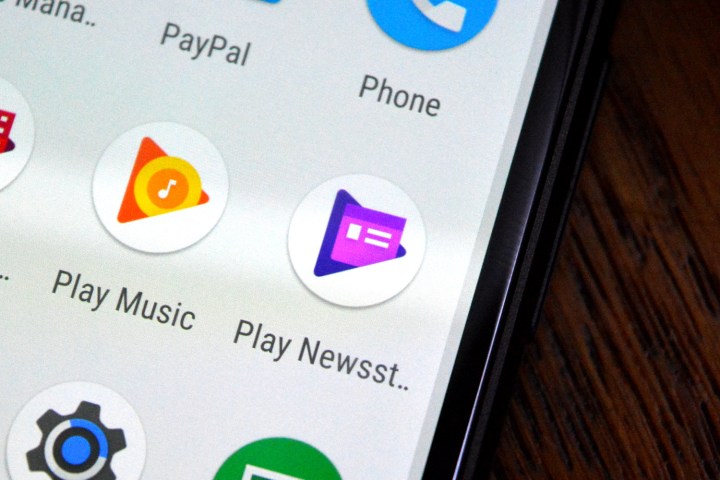
Perhaps the biggest change is the aforementioned redesign, which gets rid of the Highlights and Top News streams and replaces them with a series of personalized greetings and articles that you might find interesting. These fall under the title “Briefing.”
The Briefing section is really the new center of Play Newsstand, and it’ll show the top stories for any given moment, as well as top headlines for a number of different topics.

There are a number of other screens you can jump to as well. Sections include “For You,” “Library,” “Explore,” and “Read Later,” all of which are pretty much what they sound like. The Library screen, for example, is basically a reorganized version of the “My Library” section featured in the previous version of the app. A new tab called Topics & Sources is also there, which is where, once you scroll to the bottom of the screen, you’ll find your magazines.
Even the search bar got a few new features. The bar will now offer suggestions for possible searches, as well as landing pages for trending topics, magazines, and news sources.
In general, the new version of the app really seems like a step forward. It’s still a great place to get your news and latest headlines, but now there’s a big emphasis on the Briefing page. Some users suggest that the new interface is a little difficult to navigate, but it’s likely that over the next few months we’ll see little tweaks to how the app works that make the interface a little more seamless.
The updated app is rolling out now, so if you don’t have access to it just yet, you should in the near future.
Editors' Recommendations
- Have a Google Pixel phone? You’re about to get these new features
- Google just announced 9 new features for your Android phone and watch
- Play ‘spot the difference’ with Google’s new Play Store logo
- All the new Chromebook features quietly announced at Google I/O
- Google Play improves privacy, payments, and subscriptions


